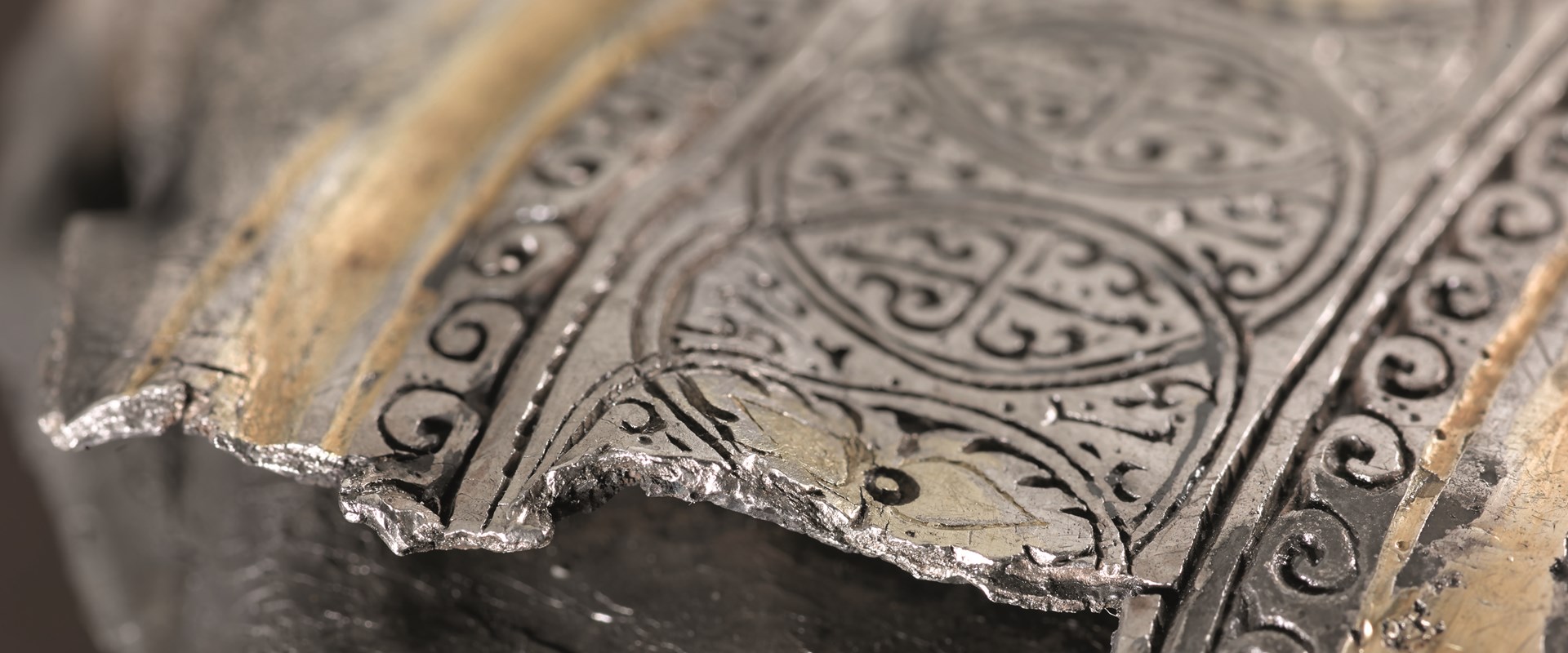Scotland’s Early Silver
13 October 2017 to 25 February 2018
National Museum of Scotland, Chambers Street, Edinburgh
Admission: Free
Glenmorangie Research Partnership sheds new light on early society in Scotland
A new exhibition at the National Museum of Scotland supported by Glenmorangie will show for the first time how silver, not gold, became the most important precious metal in Scotland over the course of the first millennium AD.
New research and recent archaeological discoveries will chart the first thousand years of silver in Scotland. The exhibition will showcase Scotland’s earliest silver, arriving with the Roman army, and show the lasting impact this new material had on early Medieval Scotland.
This research is part of a unique multi award-winning cultural partnership with The Glenmorangie Company which is now in its ninth year.
Alice Blackwell, Glenmorangie research fellow at National Museums Scotland, said:
"We’re delighted to be able to showcase the first thousand years of silver in Scotland. This exhibition looks at the most powerful objects made in a new and precious material. It sheds light on the crucial transition from Roman Iron Age tribal society to the first kingdoms in Scotland that emerged in the 4th – 9th centuries.
“It’s very exciting to be able to tell a story of a thousand years of power and prestige through the biography of this one precious metal. This research would not have been possible without the long and enthusiastic support of The Glenmorangie Company, and we are extremely proud of how our innovative partnership has enriched academic and public understanding of Scotland’s past.”
Hamish Torrie, Corporate Social Responsibility Director at The Glenmorangie Company, said
"We are rooted deep in Scotland and Glenmorangie has been delighted to support the extensive study of the Early Medieval period in an innovative research partnership that is now in its ninth year. The exhibition is another exciting milestone in the Glenmorangie Research Project, bringing fascinating material and innovative scholarship into the public eye.”
The exhibition will include the first public display of the recently unveiled Dairsie Hoard, which dates to the late 3rd century AD and is the earliest known example of hacksilver from anywhere beyond the Roman frontier.
Also on its first full public display is the Gaulcross hoard, discovered in Aberdeenshire in 2013. Since its excavation, research has revealed striking similarities with another find, from Norrie’s Law, in Fife. Both hoards date to the 5th–6th centuries AD and show for the first time how earlier Roman silver was recycled and repurposed over the centuries.
The exhibition will be accompanied by a book publication and a programme of public events, and will reflect recent scholarship undertaken to place Scotland’s early silver in a European context through a research network project supported by the UK Arts and Humanities Research Council.
The exhibition has been made possible by an innovative partnership between The Glenmorangie Company and National Museums Scotland. Since 2008, this association has supported the Museum’s academic research and public engagement activities and funded an archaeological research post. The basis for the partnership comes from eighth-century Hilton of Cadboll Stone, on display in the National Museum of Scotland’s Early People gallery. The Hilton of Cadboll stone was discovered near Glenmorangie Distillery in Ross-shire, and is the inspiration for the brand icon that adorns Glenmorangie's range of single malt whiskies.
Further information and images from: Bruce Blacklaw, National Museums Scotland Press Office, on +44 300 123 6789 or b.blacklaw@nms.ac.uk
Notes to Editors
- National Museums Scotland is one of the leading museum groups in the UK and Europe and it looks after collections of national and international importance. The organisation provides loans, partnerships, research and training in Scotland and internationally. Our individual museums are the National Museum of Scotland, the National Museum of Flight, the National Museum of Rural Life and the National War Museum. The National Museums Collection Centre in Edinburgh houses conservation and research facilities as well as collections not currently on display.
- The National Museum of Scotland is the most popular museum in the country outside of London (source: Association of Leading Visitor Attractions). The National Museum of Scotland was awarded ‘Gold’ Level Green Tourism Visitor Attraction status in 2016.
- Scotland’s Early Silver is part of Scotland’s Year of History, Heritage and Archaeology.
- About Glenmorangie: Glenmorangie Single Malt Scotch Whisky originates in the Scottish Highlands where, at the Glenmorangie Distillery, it is distilled in the tallest malt whisky stills in Scotland, expertly matured in the finest oak casks, and perfected by the Men of Tain. The Distillery was founded in 1843 and is renowned as a pioneer in its field uniting tradition with innovation to create unnecessarily well-made whiskies. The Distillery Visitor Centre welcomes visitors from across the globe all year round.
- The Arts and Humanities Research Council (AHRC) funds world-class, independent researchers in a wide range of subjects: ancient history, modern dance, archaeology, digital content, philosophy, English literature, design, the creative and performing arts, and much more. This financial year the AHRC will spend approximately £98m to fund research and postgraduate training in collaboration with a number of partners. The quality and range of research supported by this investment of public funds not only provides social and cultural benefits but also contributes to the economic success of the UK. For further information on the AHRC, please go to: http://www.ahrc.ac.uk/
Background
Scotland’s first silver came as coins and small dress accessories from the Roman world. Roman frontier diplomacy used payments of silver coins to buy peace and allies beyond its frontiers. This early silver coinage could not be spent beyond the frontier, but it was not just melted down – it was used by local elites to impress rivals and make gifts to the gods, hoarded and buried in the ground.
Local attitudes changed with a shift in Roman policy – the empire began to use ‘hacksilver’ for these transactions. Hacksilver refers to objects literally hacked into pieces, converted from beautiful treasures into raw silver bullion. Roman silver began to be melted down and made into new, local power symbols. This was the start of generations of recycling this most valued of materials.
By the early medieval period, silver was being made into new power symbols, including massive silver neck chains. These striking objects are unique to Scotland, and the nine surviving examples will be showcased together for the first time in this exhibition. They show both the importance of silver and the amount that was available in parts of Scotland – the heaviest is made from almost 3kg of silver. Elaborate brooches were also made in silver, and the exhibition will re-examine one of National Museums Scotland’s most iconic objects, the Hunterston Brooch.
After hundreds of years of recycling the same silver, supplies became scarce and diluted, debased by bronze added to make limited supplies stretch further. The first new sources of silver in almost a thousand years arrived with the Vikings, and the exhibition ends with objects illustrating the new ideas that came with these new metal supplies.


